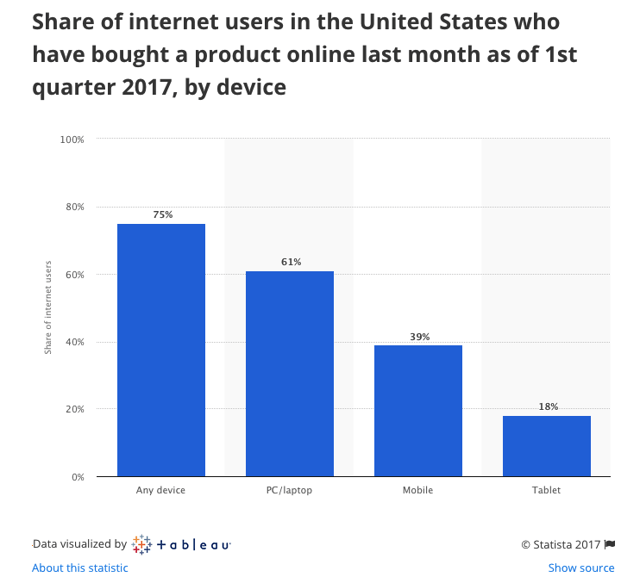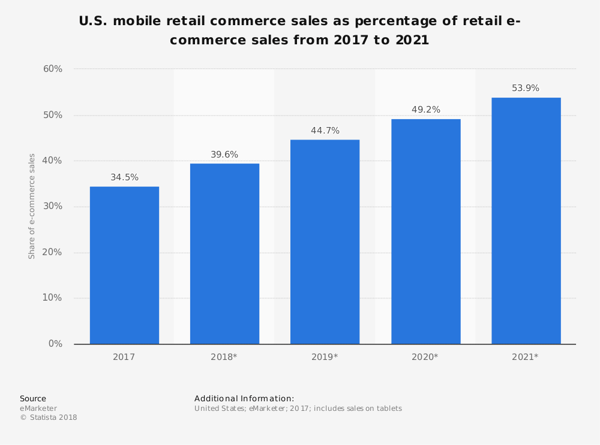
Everyone loves buying stuff online. More and more businesses are expanding their e-Commerce services for outdoor products and reaching new customers thanks to the robust features of an online e-Commerce platform. The world's number one automated marketing platform, HubSpot, now has a native integration with Shopify.

But all of this shopping online creates its own set of challenges, both for consumers and the companies that are trying to get their products onto shoppers' screens and into their shopping carts. In short, you need a plan.
How fast can you say "change"?
The retail landscape has changed dramatically in the last 10 years. It is continuing to change at a feverish pitch. How do outdoor industry brands e-Commerce strategies navigate this ongoing change when:
- More retailers are going out of business
- Retailers are struggling to find qualified workers, which impacts service which impacts the customer experience
- Consolidation among outdoor retailers is increasing competition for space and mindshare
- Development of virtual reality and augmented reality to assist online shoppers with selecting the right product and getting the right fit will further reduce in-store shopping
- Increased production of products customized to individual shopper profiles through online channels
- Creation of online malls
- The National Retail Federation (NRF) expects that online retail will grow 8-12%, up to three times higher than the growth rate of the wider industry. This suggests e-commerce sales are poised to fall between $427 billion and $443 billion, based on Census Bureau data. That’s right on target with BI Intelligence’s $436 billion US e-Commerce estimate. For context, brick-and-mortar retail, which still comprises the vast majority of sales, is expected to grow at just 2.8%, slower than the average rate of growth for the overall industry.
Online sales via e-Commerce fulfillment services are going to dwarf that of traditional brick and mortar retailers. Online e-Commerce is not an option, it is a necessity for outdoor brands to grow and the only question is how fast do you drop mediocre retailers and support those retailers who are committed to selling and succeeding in a digital world while building out their own e-Commerce capabilities and broaden e-tailing channels for their products. This means that while in-person sales are still important, finding ways to capitalize on rising e-Commerce, like through the addition of new channels or hybrid omnichannel functionality, will be increasingly important. "Clicks to bricks" still has meaning and value for outdoor industry manufacturers, however, it should not be the primary foundation (e-Commerce sales are expected to double by 2021) to build on.
The ways in which consumers discover, spark desire and lose affinity for brands has undergone a massive revolution. The new psychographic profiles of the modern consumer are of special pertinence to the outdoor and action sports industries, where brands are built around unique personal passions rarely found in other industries.
In reports released by Google and Searchmetrics this past week, there are several findings and observations that bear attention by outdoor industry executives, managers, and their retail partners in planning for 2018.
1. The need for speed.
As more and more e-Commerce and search is conducted on mobile, consumers have a need for fast loading content. Google’s public emphasis on load time and its AMP format led to broad advice about improving page rank by creating faster web pages. Mobile adoption and responsiveness remain critical, but speed alone should be looked at in context.

Although consumers will wait for quality content, you and your local retailers need to figure out how to quickly signal to consumers that the content is of high quality and worth waiting for. If you can do that, consumers will be more patient for the page to load. Some tips include those that AMP uses: Loading above the fold first or prioritizing text first and slower items like images or video second.
2. Local outdoor retailers must be committed to having a "relevant" online presence to be in the game
Consumers are demanding more specific information and more targeted responses, even from advertising. As Google seeks to maintain its search position, it's research has shown that there now is no one-rule-fits-all solution for local businesses ranking high on SEO. Depending on whether the consumer is looking locally for a restaurant, an attorney, an outdoor retailer or tuxedo rental store, the information they need to decide is significantly different. As a result, the algorithms are continuing to change for different categories of business.
Local outdoor retailers must provide the most relevant information that answer's the consumers' search inquiry for the product or service they are searching. If they don't, outdoor retailers will fail in their partnership with outdoor industry manufacturers to remain relevant to consumers.
Additionally, the growing blur between online and offline commerce means that local businesses need to maintain a strong online store presence. It’s no longer solely about driving foot traffic from online ads or local search results. Consumers may buy online and pick up in store. Or buy in store and reorder online. Or book appointments online for offline visits.
Consumers expect these conveniences and cross-media interactions to be seamless. Thus, local businesses need to be easy to find both offline and online, to make their online experiences great and to design storefronts that continue that online user experience.
3. High performing e-Commerce websites exhibited these benchmarks when compared to universal performance metrics
- 40 percent higher interactive elements like buttons, menus, click to call.
- More than double the rate of online stores above the fold.
- 70 percent more bullets per list and 25 percent higher word count.
- 73 percent more internal links.
- 32 percent larger file size.
- 30 percent less video integration.
- 74 percent less Facebook integration.
Not surprisingly, e-Commerce sites prioritize online stores and calls to action via interactive buttons and menus. They also have substantial internal links, presumably because consumers like to consider or compare other products or services offered on the site. Detailed product descriptions via lists are valued over video. And e-commerce sites rely less on social media.
71% of US consumers use Amazon to research products, and over half of consumers start there. If you aren't on the first page of search results, you might as well be out of stock. Having product page content that's optimized for Amazon's search algorithms is more critical than ever.
4. You must understand what level of information a consumer needs to make a decision to purchase your product
What kind of information are you providing consumers regarding your products? If it is gear such as electronic devices, then you need technical specifications and functional capability. Knowing what features are included in the price helps determine value. Google will prioritize search results that help consumers make these decisions.
Consumers will search narrowly but deeply about specific subjects. Helping break down the information into more easily understood headings and bullet points appears to be valued by Google. Unless you are selling high dollar products (cars, homes, and expensive electronics), consumers don't want to take as much time to study product details. One rule of thumb is your outdoor product going to be used in situations that the user's life depends on it? If so, then consumers will care more about product specifications, technical reviews and materials used. If it's to get outdoors with no risk, maybe not so much. Make it easy for them to compare the benefits and features that they’ll spend their hard-earned money on.
5. Images are important but don't overdo it
Yes, the data has repeatedly indicated that user engagement increases when using images. However, you don't want to overdo it. Complex subjects and information that is well organized in a text presentation can be more compelling than a visual image. Visual images are most important for products in which the customer needs a to conduct a visual evaluation of the product during the purchase journey.
6. Reviews matter
Online reviews generate brand trust and increase conversion rates. Reviews are made by real people, in the real world, who have physically experienced the service away from their computer screen. Customer reviews can help answer questions that other sources cannot, such as the service reliability, quality, value and life endurance.
Customer reviews from peers are the most trusted source of information online; must more valuable than a professional endorsement and anything the brand may say. Customer reviews are now an established part of the online journey. It's commonplace to see e-commerce websites boasting customer reviews to the extent that a website with no reviews seems strange.
Whats Your Plan for 2018?
As we approach the end of the year, there is no better time to take a look at what digital marketing efforts worked and what didn't work as well as you had hoped. You need good resources to develop an e-Commerce strategy and digital marketing strategy. To-do lists always seem to grow and can become overwhelming. Take a deep breath, relax, and read on to see what you should focus on when checking off your list.
Recap the Year's Campaigns and Results
It was probably at this time last year when you were starting to set your goals for this year. Well, how did you do? There is no better time than the present to evaluate what marketing activities brought in the newest customers or provided the highest ROI. Evaluate all your digital marketing campaigns and review their performance and how they worked toward accomplishing your end goal. Some campaigns may have been a big flop and need to be cut. Others might just need to be tweaked. Organize your key takeaways and use that when planning for next year's marketing campaigns.
Don't forget to include your team in this planning process. Get everyone's input and make sure they are invested in the strategy that you build together. By doing this, you will be prepared to hit the ground running when January 1st rolls around.
Set Your Marketing Budget
Before you calculate your marketing budget, align your marketing goals with your company's strategic goals and vision for growth. It's important to develop a written marketing strategy that the executive team, marketing team, and sales team are all onboard with. Revisit your end of year campaign review, build your strategy, and create a budget for next year geared toward growth and improvement.
Try Some New Marketing Tools
There are new tools being developed all the time that will help you market better and with less effort. Research some of these tools and take some for a "test ride". Here are some of the tools/platforms we think are pretty cool:
- TwentyThree: TwentyThree is a video marketing platform that allows you to build the best video experience on your website, landing pages, and the rest of your web presence. You can capture viewer behavior and the journey they are taking. See who is watching videos and which of your videos are creating leads. The cherry on the top is that it integrates with HubSpot. Check out this blog article on our partnership with TwentyThree.
- SeventhSense: SeventhSense helps marketers and sales professionals by using artificial intelligence powered email. You can deliver emails at personally optimized times, getting the right email, to the right person, at the right time. Again, this platform integrates with HubSpot.
- TrenDemon: TrenDemon is a content marketing tool. It helps you understand your content's performance, know what to promote and where, and gives you an in-depth visual analysis of the impact of your content for each of your business goals. Check out this tool if you're ready to uncover the impact of content marketing on your business. Oh, and one more thing - you got it, it integrates with HubSpot.
- Databox: With Databox, you can connect all your data sources to track all your company's performance in one place, from any device. You can launch dashboards with real-time visualizations of your data in minutes, with no coding required. Focus more on the metrics that matter by setting goals in Databox, monitoring the progress, and drilling deeper for more advanced insights. Check out our helpful blog article on the integration success with Databox and HubSpot.
- atEvent: If attending trade shows is still a "must do" in your marketing program then you need a tool like atEvent that allows you plan, integrate data directly into your CRM, execute on site, deliver immediate personalized follow-up through segmented workflows, and calculate a "cost of lead acquisition" in real time. If you are not collecting and tracking your lead data accurately, and if this data is not the determining factor for which events you attend as an exhibitor, you are not only missing the boat but possibly sinking it.
Thank Your Customers and Partners
Don't be one of those brands that are just known for seeking more money from your customers and partners. Instead, position your company as a trusted partner. As the end of the year approaches, it's the perfect time for small gestures of goodwill. Send gifts or simple thank you cards to your valued partners and clients. Little tokens of appreciation can go a long way when building lasting relationships. After all, you wouldn't be where you are today if it weren't for your customers and partners.


